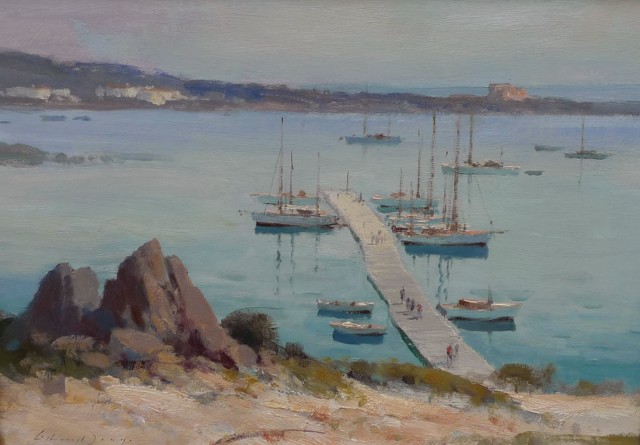Edward Seago
(1910–1974)
Edward Seago was a celebrated painter of landscapes, seascapes and flowers. He was also an accomplished watercolourist and is often considered to be one of the leading British Post Impressionists.
Although largely self-taught, Seago did receive some training from Bertram Priestman RA and also undertook evening classes at the Norwich School of Fine Art.
He was a painter of landscapes, seascapes and flowers. He was also a watercolorist and is considered a Postimpressionist. He was a member of the Royal Society of British Artists from 1946, and of the Royal Watercolours Society from 1959. He exhibited in London, Glasgow, New York, Toronto, Montreal, Los Angeles, Oslo and Brussels.
Seago spent much of the 1930’s working with the touring circus and the ballet in London, recording the excitement and movement of the acts set before him. A number of books on both subjects, besides many paintings were completed to document this stage of his career. It was during this period that he had his first painting accepted by the Royal Academy for the summer exhibition.
He was a member of the Royal Society of British Artists from 1946, and of the Royal Watercolour Society from 1959. He exhibited in London, Glasgow, New York, Toronto, Montreal, Los Angeles, Oslo and Brussels. He showed his first solo exhibition in London in 1944, and two years later presented paintings giving a narrative history of the Italian war. In 1957 whilst still in London at Saint James Palace, Seago presented canvases he had realised during the world tour of the Duke of Edinburgh. Essential to a landscape artist, he remained faithful to an impressionistic atmosphere, attempting to capture the rapid touches from the shimmering of light, made to sometimes bathe together in a blur like that of Turner. He liked to translate English landscapes in particular like those of Norfolk, but also painted much from abroad.
During the Second World War Seago served with the Royal Engineers and often painted in Italy with Field-Marshall Lord Alexander. His war pictures were exhibited in 1946 at the Norwich and Bristol Municipal Galleries.
Edward Seago was involved in the publication of many books throughout his career. In 1934 he published a book entitled Sons of Sawdust which told of circus life in the West of Ireland. He also published Peace in War (1943), High Endeavour (1944), With The Allied Armies in Italy (1945) and his autobiography A Canvas to Cover (1947). In 1936 some 42 of his paintings were used to accompany John Masefield's collection of poems, The Country Scene and he worked with Masefield again on Tribute to Ballet in 1937 and a Generation Risen (1942).
Exhibited:
The Royal Academy
The Royal Watercolour Society The Royal Society of British Artists
Suffolk Street The Royal Institute of Oil Painters
The Royal Western Academy
The Paris Salon and the provinces.
